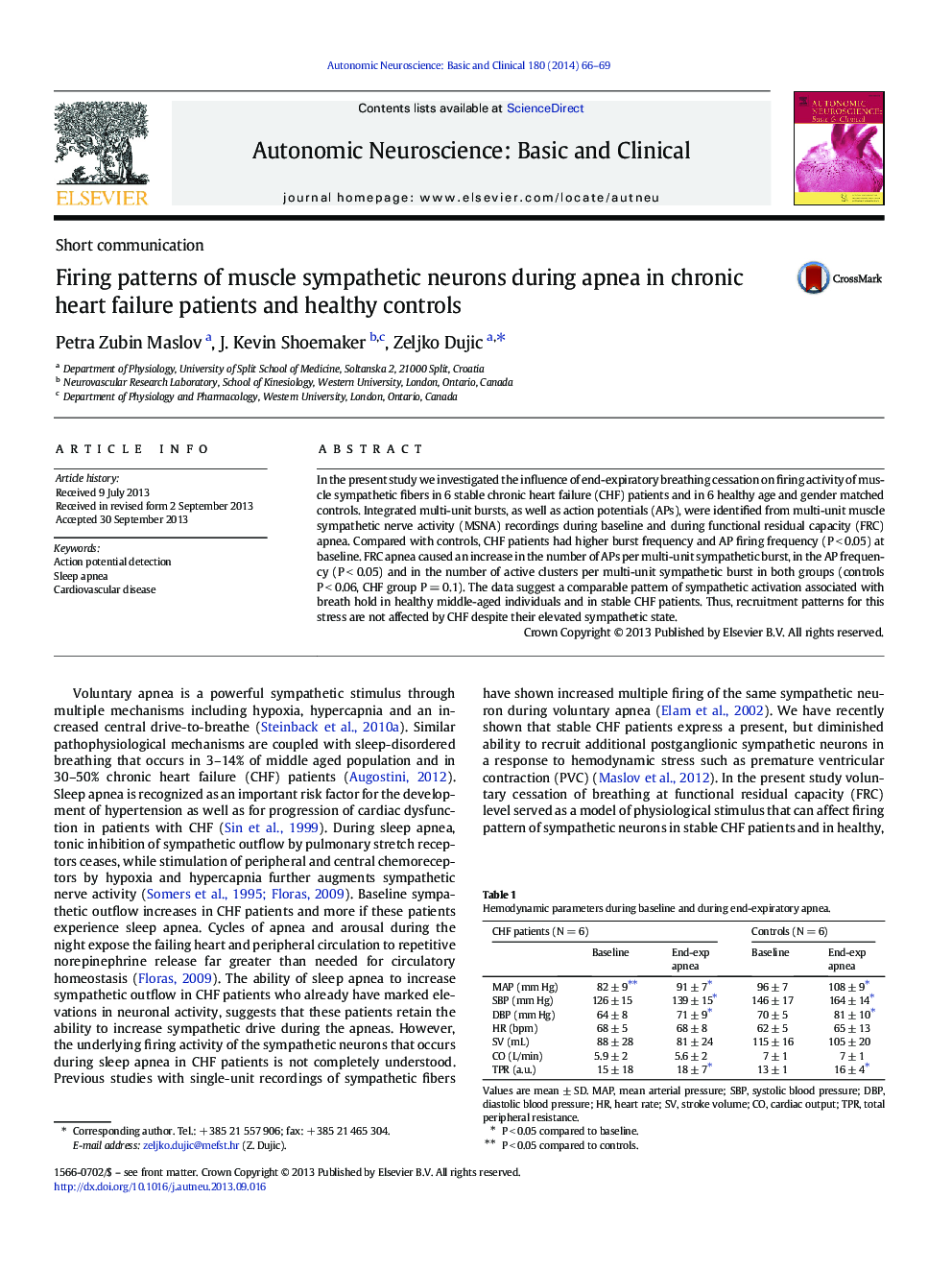| Article ID | Journal | Published Year | Pages | File Type |
|---|---|---|---|---|
| 6004074 | Autonomic Neuroscience | 2014 | 4 Pages |
In the present study we investigated the influence of end-expiratory breathing cessation on firing activity of muscle sympathetic fibers in 6 stable chronic heart failure (CHF) patients and in 6 healthy age and gender matched controls. Integrated multi-unit bursts, as well as action potentials (APs), were identified from multi-unit muscle sympathetic nerve activity (MSNA) recordings during baseline and during functional residual capacity (FRC) apnea. Compared with controls, CHF patients had higher burst frequency and AP firing frequency (PÂ <Â 0.05) at baseline. FRC apnea caused an increase in the number of APs per multi-unit sympathetic burst, in the AP frequency (PÂ <Â 0.05) and in the number of active clusters per multi-unit sympathetic burst in both groups (controls PÂ <Â 0.06, CHF group PÂ =Â 0.1). The data suggest a comparable pattern of sympathetic activation associated with breath hold in healthy middle-aged individuals and in stable CHF patients. Thus, recruitment patterns for this stress are not affected by CHF despite their elevated sympathetic state.
